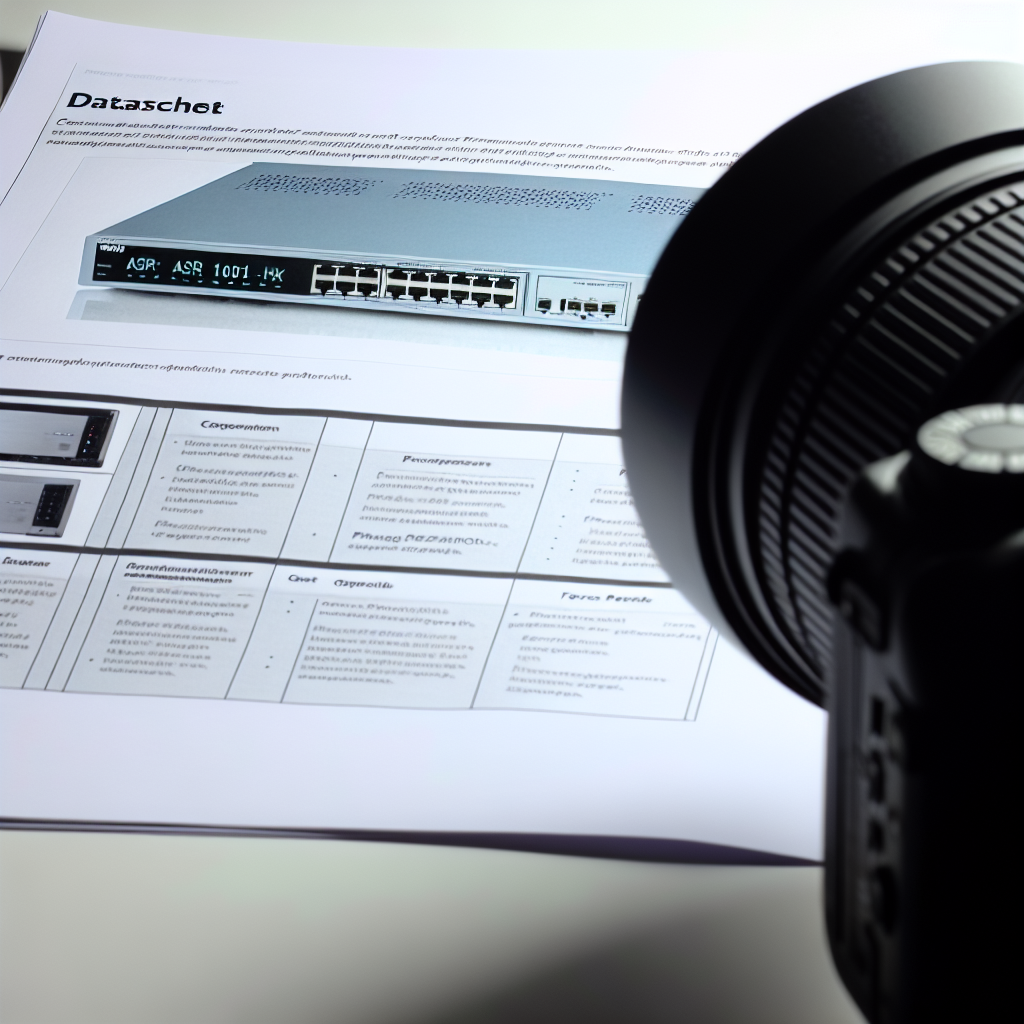LACP Port-Channel Fails to Establish with GLC
LACP Port-Channel Fails to Establish with GLC-TE SFP Mo...

The Cisco ASR 1001-HX router is a high-performance, compact aggregation services router designed to meet the demanding requirements of enterprise and service provider networks. Engineered to deliver exceptional throughput, scalability, and advanced services, the ASR 1001-HX is a critical component in modern network infrastructures that require robust, secure, and flexible routing solutions. This article provides an expert-level technical analysis of the ASR 1001-HX datasheet, highlighting its architecture, performance metrics, use cases, and integration capabilities based on official Cisco documentation and industry research.
The Cisco Aggregation Services Router (ASR) 1000 Series is widely recognized for its ability to consolidate multiple network functions into a single platform. The ASR 1001-HX model, in particular, is a compact, high-density router optimized for edge and aggregation deployments. It supports advanced routing protocols, integrated security features, and high availability, making it suitable for enterprise WAN aggregation, data center interconnects, and service provider edge applications.
According to Cisco’s official datasheet, the ASR 1001-HX is designed to deliver up to 20 Gbps of throughput, supporting a wide range of interfaces and services. Its modular design allows for flexible network expansion and service integration, which is critical in environments where bandwidth demands and service complexity are rapidly evolving.
The ASR 1001-HX features a compact 1 rack unit (1RU) form factor, making it ideal for space-constrained environments. It supports two integrated 10 Gigabit Ethernet (10GE) ports and two built-in 1 Gigabit Ethernet (1GE) ports, with additional modular interface slots for further expansion. The router’s chassis supports pluggable optics, including SFP+ and QSFP+ modules, enabling flexible connectivity options.
Internally, the ASR 1001-HX leverages Cisco’s QuantumFlow Processor (QFP), a purpose-built packet processing engine that enables wire-speed forwarding and advanced services such as deep packet inspection, encryption, and traffic shaping. The QFP architecture supports parallel processing of up to 40 concurrent threads, significantly enhancing throughput and reducing latency.
The ASR 1001-HX delivers up to 20 Gbps of aggregate throughput, which is a substantial improvement over its predecessor, the ASR 1001-X, which supports up to 10 Gbps. This doubling of throughput is achieved through hardware enhancements and optimized software stacks in Cisco IOS XE.
Scalability is further enhanced by support for up to 128,000 routes in the routing table and 16,000 MAC addresses, enabling the router to handle large-scale enterprise and service provider networks. The device supports up to 4,000 VLANs and 2,000 VRFs (Virtual Routing and Forwarding instances), facilitating multi-tenant and segmented network architectures.
The ASR 1001-HX runs on Cisco IOS XE, a modular and programmable operating system that supports advanced automation, programmability, and security features. IOS XE enables seamless integration with Cisco DNA Center and Cisco SD-WAN solutions, allowing centralized management and orchestration of network services.
Key software features include:
Security is a critical aspect of the ASR 1001-HX platform. The router supports MACsec (Media Access Control Security) on 10GE interfaces, providing line-rate encryption to protect data in transit against eavesdropping and tampering. Additionally, the device supports hardware-based cryptographic acceleration for IPsec VPNs, enabling secure site-to-site and remote access VPNs without compromising performance.
High availability features include redundant power supplies and fans (in supported configurations), Stateful Switchover (SSO), and Nonstop Forwarding (NSF), which ensure minimal downtime during software upgrades or hardware failures. These capabilities are essential for mission-critical deployments where network uptime is paramount.
In large enterprise networks, the ASR 1001-HX serves as an aggregation router at the WAN edge, consolidating multiple branch office connections into a single high-capacity uplink. For example, a multinational corporation with hundreds of branch offices can deploy ASR 1001-HX routers at regional aggregation points to aggregate MPLS, broadband, and LTE links, providing resilient and high-performance connectivity to the data center.
Research from IDC highlights that enterprises adopting Cisco ASR 1000 Series routers experience up to 30% reduction in WAN operational costs due to simplified network architecture and integrated services. The ASR 1001-HX’s support for SD-WAN further enhances WAN agility and cost efficiency by enabling dynamic path selection and centralized policy enforcement.
Service providers utilize the ASR 1001-HX as a customer edge (CE) router or aggregation node in metro Ethernet and broadband access networks. Its support for MPLS, segment routing, and EVPN-VXLAN enables providers to offer scalable Layer 2 and Layer 3 VPN services with guaranteed SLAs.
For instance, a Tier 2 service provider deploying the ASR 1001-HX can leverage its high throughput and advanced QoS features to deliver differentiated services such as IPTV, VoIP, and cloud connectivity to enterprise customers. Cisco’s internal benchmarks demonstrate that the ASR 1001-HX can handle up to 10,000 simultaneous VPN tunnels, supporting large-scale multi-tenant environments.
| Specification | Details |
|---|---|
| Form Factor | 1RU |